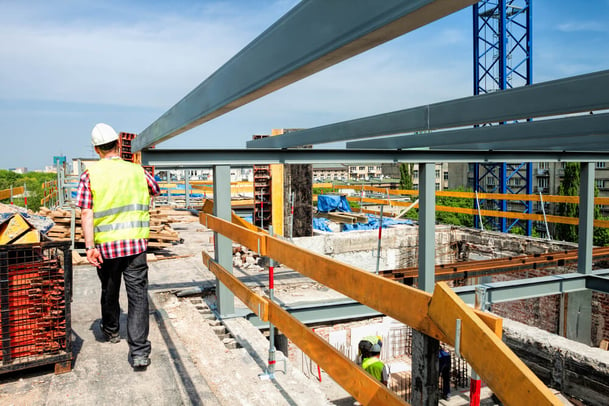The handover of any new build or construction project is the culmination of a complex process often providing much-needed facilities.
Indeed, the nature of any individual project, whether a social housing development or a new cancer care centre, will have its unique dynamics and there will be successes and failures along the way.
In the context of water hygiene management/Legionnaires’ disease prevention, although general awareness of potential pitfalls leading to increased inherent problems and avoidable operations problems has improved somewhat, there remain many areas at all stages of a project and by all the parties involved, where significant improvements can be made.
Common water hygiene risks include:
- A design specification that does not serve the function of either the build or client;
- A water systems design that is unnecessarily too complex;
- Designs that provide compliant water systems without taking account of the concept of ALARP (as low as is reasonably practicable);
- A lack of qualified review/comments at the specification or design stages;
- A lack of trained (recently or otherwise) designers and installation experts;
- Inadequate communication between key stakeholders throughout the project, including the client’s Water Safety Group;
- A lack of clearly defined responsibilities for all parties from designer to end user;
- Inadequate Legionella risk assessment throughout all key phases of the project;
- Inappropriate materials and fittings.
It is worth pointing out, that the listed items do not relate to common day-to-day construction project difficulties, including those related to time constraints, scheduling, and the use of multiple contractors, but rather a lack of preparedness or use of a comprehensive water hygiene management system which underpins both maintenance and project work.
The cynic would perhaps suggest that maintenance teams have more of a vested interest in seeing a project delivered, without needless water hygiene ‘snagging’ issues, than either construction management or client project teams.
Water hygiene - Getting it Right 1st Time
Water can’t be entirely free from aquatic organisms, therefore, measures have to be taken to guard against conditions that encourage the growth of waterborne pathogens such as Legionella and Pseudomonas aeruginosa.
So, to avoid potentially costly remedial works, the design of new buildings and their water systems is controlled to ‘get it right first time’, essentially to ‘design out’ risk, leading to the safe operation of a building’s water system, having had proper design, installation, commissioning, operation, and maintenance. A client’s ‘Water Safety Plan’ will endeavour to provide structure along the way, to a facility without complications. There have been well-documented water systems project issues at Glasgow’s Queen Elizabeth University Hospital (QEUH) https://www.bbc.co.uk/news/uk-scotland-glasgow-west-50589118.
From a project staff perspective, the elimination of the following is key to successful new build or refurbishment projects:
Lack of communication
Water hygiene risk management is as important in the construction and delivery of new builds as ever, and inherent failures are often expensive to resolve and long-lasting. During the construction phase of a project, the appointed Project Manager is responsible for identifying multiple potential problems and finding ways to mitigate them. They need to gather input and plan ways to prevent the project from veering off course.
Without this, the project will certainly go over budget or be delayed. However, more specifically from a water safety perspective, clear lines of communication, accountability, and responsibility for any new project, must be established at the beginning of the project, and time built into the tender specification to allow for a thorough review of the water hygiene/safety aspects of the system, through all stages of the project to ensure it can deliver the required water quality for its intended purpose.
Lack of competence
All those involved in the specification and design of systems, through the development process, to full operational use, must have sufficient legionella training and experience to understand the impact of the design on water safety and their role in ensuring all biological, chemical, physical and radiological risks from water on site are assessed and managed, so water meets the criteria at the point of use agreed by the Responsible Person (RP) and/or Water Safety Group (WSG).
The RP/WSG should ensure that all contractors and those employed to work on water systems on site have completed an industry-recognised water hygiene course and have the necessary competence and experience of the type of system and associated equipment to be installed.
More specifically, all installers must be suitably trained, experienced, competent, and familiar with the types of water systems/equipment and ways associated hazards could be introduced, which in turn might cause a deterioration in water quality or harm to those who might be exposed.
It is also clear, that WSG members must have sufficient training and input of appropriate expertise to ensure the Water Safety Plan has robust processes and checks in place.
Lastly, those carrying out the commissioning of a project must also have the skills, knowledge, experience, and, where relevant, organisational capability to carry out this work.
Recent Water Hygiene Guidance
BS8680 Water Quality – Water Safety Plans – Code of Practice [2020] goes a long way to providing the Design Framework that will provide a robust structure, capable of successfully delivering the project any client would expect.
BS8680 states:
‘The safe operation of a building’s water system is a culmination of its proper design, installation, commissioning, operation and maintenance. Indeed, the objective of any water system design process should be to ensure that after completion, water systems and equipment are free from hazards (biological, chemical, physical, and radiological), including waterborne pathogens, such as Legionella spp’.
The Water Hygiene Centre’s experience of new projects would certainly agree that:
‘Water systems should be designed such that they do not pose a risk of harm to those who might be exposed to the water systems or associated equipment throughout the life cycle of the building, including to residents, staff, visitors, members of the public and, where applicable, patients.’
BS8680 additionally states:
‘All water systems, attached equipment, fittings, components, and equipment should be specified and designed to ensure that they do not introduce inherent risks’,
i.e. allow the introduction of hazards or increase hazards to levels which can cause harm to those exposed. They should be easily accessible and with sufficient space for cleaning and maintenance. These considerations must not be taken for granted or underestimated.
 Projects are now starting to be more routinely reviewed and discussed within WSGs, however, there remains some way to go in ensuring all significant projects are overseen appropriately by key stakeholders. Ensuring your organisation takes on board BS8680’s key design considerations with regards to adequate consultation, the project user requirements, workers' competence, Legionella risk assessments at each stage of the project, adequate supervision and permit to work use, robust commissioning and clarity on handover documentation – the successful project you both expect and desire will be a little closer.
Projects are now starting to be more routinely reviewed and discussed within WSGs, however, there remains some way to go in ensuring all significant projects are overseen appropriately by key stakeholders. Ensuring your organisation takes on board BS8680’s key design considerations with regards to adequate consultation, the project user requirements, workers' competence, Legionella risk assessments at each stage of the project, adequate supervision and permit to work use, robust commissioning and clarity on handover documentation – the successful project you both expect and desire will be a little closer.
Feel free to reach out if you have any questions about the issues mentioned above or if you would like to consult with one of our experts on water hygiene.
Editors Note: The information provided in this blog is correct at date of original publication – March 2021 (Revised July 2024)
© Water Hygiene Centre 2024











